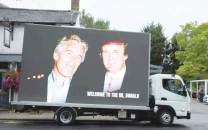Culture of insecurity

Culture of insecurity
You immediately slow down, and dim your lights like any good citizen would do to facilitate the process of vetting the rotten apples from the good ones, and catching the bad guys and making the city a safer place. You enter the brightly lit check-post area and you can almost sense the CCTV cameras piercing through you alongside gun barrels pointing right at you. A couple of anxious guards stand at the peripheries gaping right at you, trying to peer deep into your soul, trying to figure out just who you are. You hope to do your smooth steering twirl on both sides going around the obstructions designed to slow you down.
Hoping to coolly navigate through the maze without being stopped or searched you try your best to look natural and not suspicious. But the ambiguous baton gesture that tells you to go and stop at the same time catches you off guard. You stop to ask if you were being stopped and as a result you end up getting stopped even if you weren’t going to. You haul your car into a long, annoying interrogation.
Security and culture may seem like two distant concepts, but when insecurity starts becoming more pronounced both in the realms of society and its administration, culture begins to subtly morph to accommodate new ways of association. Naturally, culture is a product of the summation of our collective responses to the material circumstances we face as a society. The developing nature of insurgency-driven urban conflict has brought the destructive capabilities of both state and non-state force in the very midst of our daily lives, where it seems a little too close for comfort. Suddenly everything seems a little edgy, a little surreal. Going through a check-post has become an urban cultural ritual. People don’t realize it but they end up going through this drill several times a day. Sometimes you get stopped, sometimes you don’t, sometimes you get harassed. This is the synaptic point where power gets under your skin, the point where the uncomfortable suspicion of everyone and everything seeps into you. You have to stare through the dark tunnels of several gun-barrels in a day. If you ever stop behind a military patrol at a traffic light you get the courtesy of several machine-guns pointing right at you; you just hope they don’t decide to give you a twenty-one gun salute.
It is quite evident in the past few years how the urban-geography of cities like Lahore and Islamabad have changed. Suddenly, major intersections are blocked or partitioned. Conventional routes don’t make sense any more.
Buildings have extended walls and barbed-wire fences. Schools and important neighborhoods are now accessible only through a big iron gate. People check your trunk even when you go to a fast-food drive-through. How can it be that the security infrastructure is everywhere yet this sense of insecurity remains as ubiquitous as ever?
At the end of the day this security apparatus doesn’t really make the common man feel any more secure. People are still wary of random people exploding in crowded places, or shoot-outs breaking out spontaneously, or an old beat-up car exploding in a traffic jam. It becomes quite evident that the security is present only to protect the powerful and whoever else who can afford it. This is different from security provided to all: while government offices and places of business have access to private and public security, average people still have to grapple with fear and paranoia on a daily basis. People who don’t come in that exclusive club of individuals and institutions are left to face the double-whammy of dealing with the threat of terror, and the creeping degree of surveillance and interrogation.
Asif Akhtar blogs at http://e-scape-artist.blogspot.com/ and tweets at http://twitter.com/e_scape_artist.



















COMMENTS
Comments are moderated and generally will be posted if they are on-topic and not abusive.
For more information, please see our Comments FAQ